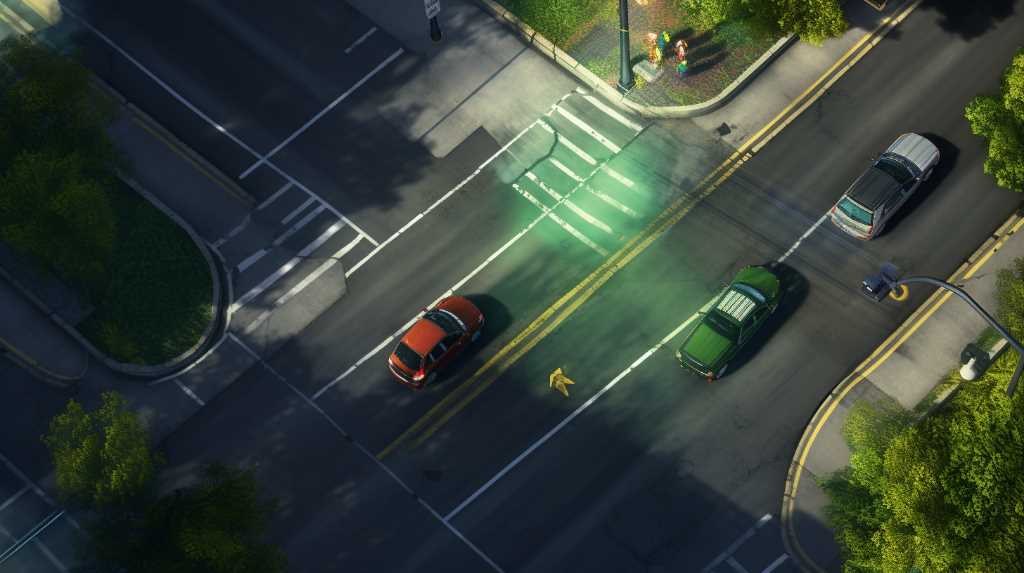
In car accidents where someone makes a left turn and crashes, it’s often tricky to figure out who is responsible. To decide who’s at fault, it’s important to look at who had the right to go first, study the crash site carefully, and check if everyone followed the traffic lights and signs.
We must also think about sudden events that could have changed things, like if a pedestrian jumped out into the street or if another driver did something surprising. Figuring out who’s to blame means seeing who didn’t follow the rules and who wasn’t careful enough, based on the laws and the idea that drivers should watch out for each other.
So, deciding who caused a left-turn crash takes a careful look at what everyone involved was doing.
Understanding Right-of-Way Rules
Right-of-way rules are important because they help prevent crashes and keep traffic moving smoothly. For example, if you’re driving and want to turn left at an intersection, you need to wait for cars that are going straight through to pass first. This rule is like a traffic referee; it decides who gets to go first to avoid confusion and accidents.
When looking at car crashes, whether someone followed the right-of-way rules is a big deal in figuring out who was at fault. If you’re turning left, you have to be extra careful to make sure no cars are coming and guess how fast they’re moving. If you get this wrong and turn when you shouldn’t, you could cause an accident and it would likely be your fault.
Analyzing the Accident Scene
After figuring out who had the right of way, it’s really important to carefully check over the accident scene to figure out what each driver did to cause the crash. Experts take a good look around, making note of where the cars ended up, any tire marks, bits of broken car parts, and nearby traffic signs or lights. They take exact measurements and photos to help them piece together what happened.
By looking at where the cars got hit and how they’re damaged, they can get a sense of how the crash happened. They also make sure what witnesses say matches up with what they see at the scene. If there are traffic cameras around, the footage is super helpful to figure out the order of events before the crash.
All this careful checking is key to figuring out who was at fault.
Assessing Signal and Sign Compliance
In the context of a left-turn collision, determining liability necessitates a thorough examination of whether the involved parties adhered to traffic signals and signage. This assessment requires an analysis of signal phase timing, the positioning and visibility of traffic signs, and the compliance of each driver with the indicated instructions at the time of the incident.
Technical reconstruction of the event may involve the utilization of traffic camera recordings, electronic control module data, and witness testimonies to establish a sequence of events. The determination of whether a driver executed the turn under a permissive yellow, protective green arrow, or against a red light is crucial.
Additionally, verifying the presence and adherence to regulatory signs like ‘No Turn on Red’ contributes to the precise attribution of fault.
Considering Unexpected Situations
When figuring out who is at fault in a car accident where someone made a left turn, it’s not just about whether they followed traffic lights and signs. It’s also important to look at how each driver handled unexpected events, like a person walking into the street suddenly or another car driving unpredictably. We need to check if the drivers acted the way any careful person would have in the same situation.
For example, we should see if they had enough time to react, if they tried to move out of the way safely, and if they kept their car under control when things got stressful. Sometimes experts will recreate the crash using special techniques. They look at where the cars hit each other, how the speeds changed, and when the drivers hit the brakes. This helps figure out if both drivers were partly to blame or if it was mainly one driver’s fault.
Determining Liability and Negligence
Determining liability in a left-turn collision requires a thorough analysis of each driver’s adherence to duty of care, evaluating whether negligence played a role in the incident. The process involves meticulously examining the circumstances from multiple angles:
- the actions and decisions of the involved parties,
- the presence and clarity of traffic signals,
- road conditions, and
- the testimonies of witnesses.
Legal principles, such as the right-of-way statutes and comparative fault, are applied to the factual matrix to ascertain contributory negligence. Technical reconstruction of the accident using vehicular damage patterns, skid marks, and surveillance footage, where available, assists in piecing together the sequence of events.
Precise application of the law to the collated evidence determines the proportionate responsibility of each party.
Conclusion
To figure out who is to blame in a car accident where someone made a left turn, you need to look closely at a few key things.
First, see if the drivers followed the rules about who has the right to go first.
Next, check out the crash site to understand what happened.
Also, make sure everyone was paying attention to traffic lights and signs. Sometimes, unusual situations can affect who is at fault.
The person who didn’t drive safely or broke traffic laws is usually the one to blame.
It’s important to know who is at fault because it affects legal issues and insurance claims after the accident.